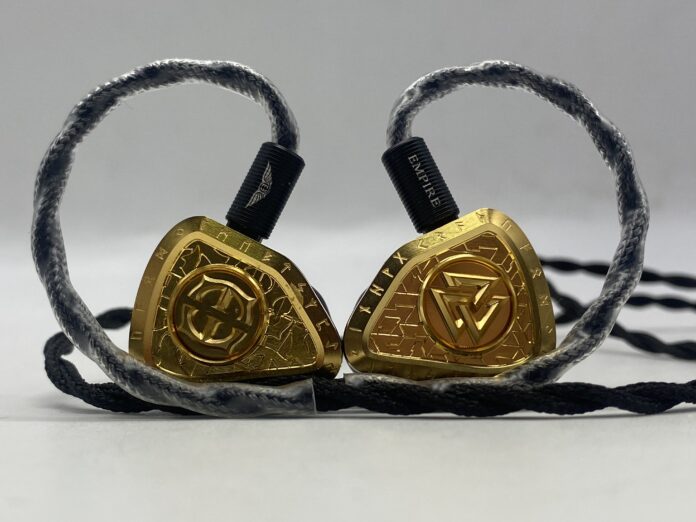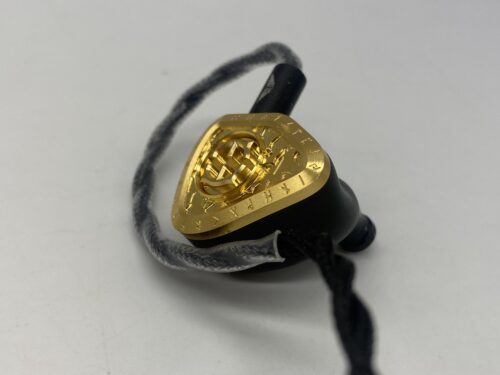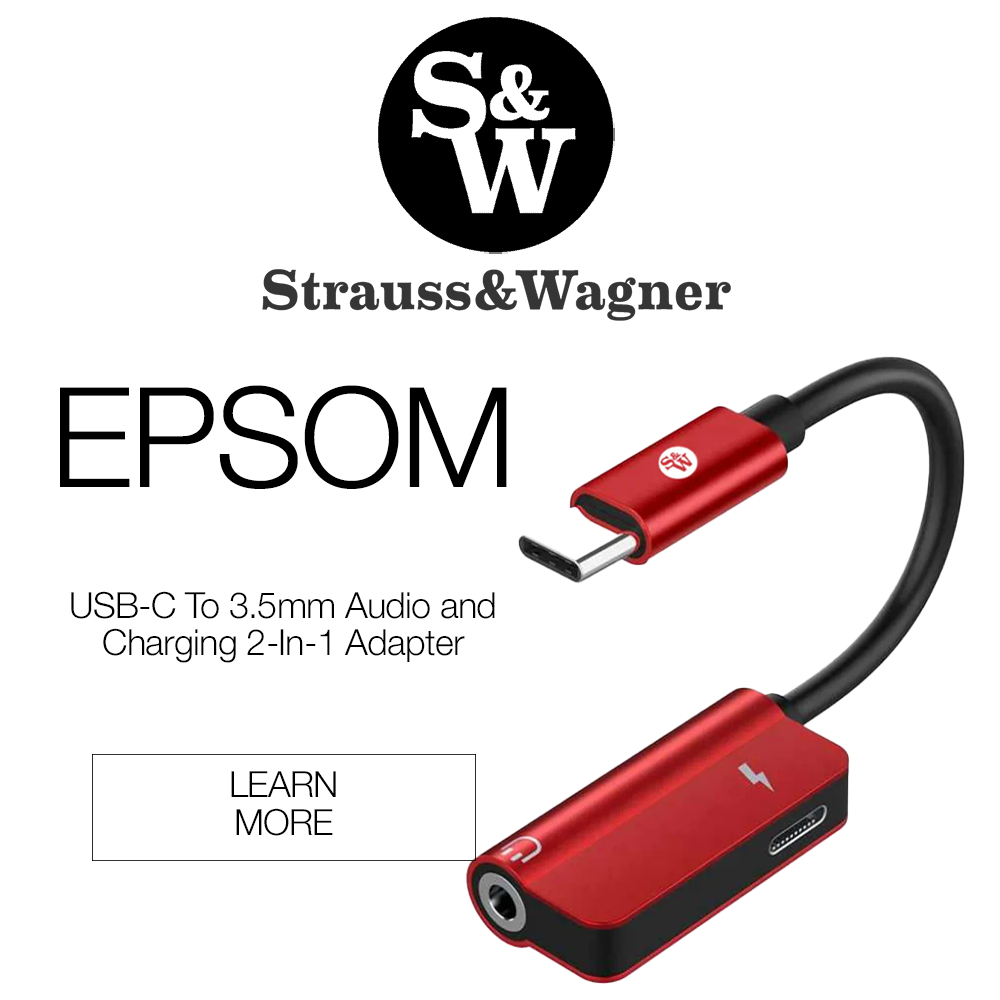Empire Ears has never been shy about pushing the boundaries of what high-end in-ear monitors can achieve, and with the Odin MKII, they’ve written a bold new chapter in their flagship story. As the successor to the beloved original Odin, this new iteration trades flash for finesse, featuring a more robust build and a redesigned tuning meant to deliver a more immersive, balanced sound. But at a price point pushing into ultra-flagship territory, does it truly stand above its peers in comfort, design, and sonic sophistication? Let’s take a close look at the Odin MKII’s construction, soundstage, and tonal profile to help you decide whether this upgrade lives up to its golden ambitions.
What You Get
- Odin MKII IEMs
- KVASIR 2-pin 4.4mm cable
- Carrying case
- Earphone pouch
- 5 pairs of ear tips SS/S/M/L/LL
- Cleaning cloth
Look & Feel
Empire Ears has evolved its design quite a bit over the years. The original Odin has a sparkly faceplate with an assortment of colors, but the Odin MKII is a departure from that, opting for a solid 24-karat gold plate. This is also a larger shell than the previous model, taking notes from more recent Emprie Ears products like the Raven. While aesthetically flashy, there’s less uniqueness to its design, and the size of the housing can come off as a bit unruly.
The Odin MKII does feature a major upgrade to its design, though, and that’s the ear cavity material. A concern I’ve had with some of Empire Ear’s IEMs was how thin and hollow the shells could be, which could be a challenge for long-term value. The Odin MKII tackles that with its matte black aerospace-grade aluminum chassis. Everything about this new build for the Odin MKII warrants its inflated price, but comfort is the real key here. Thankfully, the Odin MKII has an ergonomic fit that secures nicely, even when a good amount of the housing sticks out of your ear. It’s a light enough piece that I never felt was too cumbersome to wear.
Design
The Empire Ears Odin MKII has an 11-driver quadbrid configuration, which includes dual W9+ subwoofers, balanced armatures, and electrostatic units powered by their second-generation EIVEC system. This is supported by Empire Ears’ 10-way synX crossover to help make sense of this meaty configuration. A Dual Conduction Architecture (DCA) and an ARC anti-resonance coating are also implemented for fine-tuning.
Soundstage
You can expect the Odin MKII to have an exceptionally large wingspan that puts each sound in a precise position in the mix. While the imaging is accurate, the level of dimension you get can vary. Spatially, the Odin MKII makes no significant statements in terms of outward headspace and immersion. Although the presentation has comprehensible layering, everything outside of the extreme left and right areas of the mix felt as if it were in your head. The Odin MKII never came out of its shell like other high-end IEMs are sometimes able to accomplish. There’s not a ton of height here, but each sound is still easy to localize. You can tell when instruments and vocals are articulately folding over each other, but the space is still limited. Certain tracks can still feel big, and the separation helps demonstrate pan movement for the impression of a larger scale.
Low End
Like the original Odin, the Odin MKII supplies a thumpy bass tone that is hard not to enjoy. It’s not all impact and resonance, though; the Odin MKII is super clear and precise with its bass extension. Individual notes emanate with a refined presence, blooming through the sound signature with great depth. There’s a rumble to the sub-bass that is consistently gripping, allowing the low frequencies to have a solid foundation and take on a complete shape in the mix. Everything about the lows is exciting, but they’re also impressively balanced and never bleed into the rest of the frequency response.
Mids
Even with its heavy bass response, the midrange cuts through well, going as far as to match the lows with a similar amount of energy. These frequencies get a lot of drive throughout the spectrum, providing low-mid warmth and upper-mid power without attenuating fundamental frequencies. This results in more intimate details and artifacts being displayed throughout the midrange, especially with the physicality of piano keys and acoustic guitar strums. Vocals are incredibly crisp, dominating the tonality of the mids quite significantly. Female vocals are very raw, and their liveliness can come with a bit of shoutiness sometimes, but overall, the definition feels pure.
Highs
While the treble can feel a bit blaring and peaky at times, the frequencies present a vivid high-end tone that is well characterized. Their resolution is crisp and can result in finely tuned clickiness that adds a satisfying tick on certain details like the tip of a drumstick hitting a cymbal. The timbre takes on a more neutral identity in that sense, but with a smooth, digestible tone. There’s a real dynamism to these highs that you don’t come by often, especially in high-end IEMs like the Odin MKII.
Summary
MAJORHIFI may receive commissions from retail offers.












